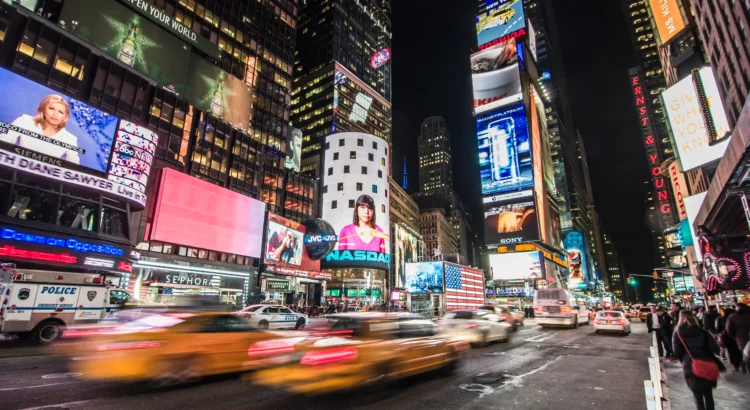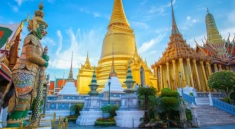
In every great city, there lies a story—a rhythm made up of its history, its creative spirit, and its pulse after dark. The world’s most unforgettable destinations are often those that blend iconic landmarks with a thriving cultural heartbeat and an after-hours energy that redefines the way we experience urban life. Whether you’re wandering through timeworn streets lined with ancient architecture, stepping into a gallery buzzing with contemporary creativity, or dancing until sunrise under neon lights, the best cities offer a seamless journey between past and present, light and shadow.
In this article, we delve into the immersive experience of a modern metropolis that captures the essence of iconic landmarks, a flourishing art scene, and vibrant nightlife—elements that together create an irresistible magnet for travelers seeking inspiration, expression, and excitement.
A City Defined by Its Landmarks
At the heart of any city’s identity are its landmarks—those powerful symbols that echo the voices of its history, power, and innovation. Whether centuries old or architecturally cutting-edge, these places anchor the city’s narrative.
A Walk Through Time
Take for example cities like Paris, New York, Barcelona, or London. In Paris, the Eiffel Tower stands not only as a symbol of France but as an emblem of human aspiration. In New York, the Statue of Liberty, Times Square, and the Empire State Building dominate the skyline, reflecting the city’s unmatched influence. In London, the Tower Bridge, Big Ben, and Buckingham Palace recall the grandeur of monarchy and history, while in Barcelona, Gaudí’s Sagrada Familia stirs the imagination with its surrealist grandeur.
Landmarks are more than photo ops—they are monuments to ambition, innovation, and transformation. They are the first step in understanding what shaped the city you’re exploring.
Living Monuments
What makes iconic landmarks truly powerful is how they’re woven into daily life. Locals pass by these towering symbols as part of their routines, blending heritage with the ordinary. Whether sitting on the steps of a grand cathedral sipping coffee or watching sunsets from a centuries-old castle wall, visitors are drawn into a living museum where history remains not in dusty pages, but in stone, steel, and skyline.
These landmarks become stages where festivals unfold, protests march, and lovers kiss—silent witnesses to the city’s evolving story.
The Art Scene: A Canvas of Creative Energy
While landmarks connect us to a city’s past, its art scene tells the story of its present. In cities around the world, art is no longer confined to museums and galleries—it spills into streets, cafes, and underground venues, becoming a living, breathing part of the urban experience.
Museums, Galleries, and Beyond
World-class cities boast some of the most renowned art institutions in the world. Consider the Louvre in Paris, the Metropolitan Museum of Art in New York, Tate Modern in London, or Museum Island in Berlin. These spaces house centuries of artistic achievement—from classical masterpieces to thought-provoking modern installations.
But the energy of a city’s art scene doesn’t stop there. Modern urban culture embraces pop-up exhibitions, open studios, and street art festivals that blur the lines between artist and audience. You might stumble across a wall transformed into a vibrant mural in Lisbon, or a sculpture park in Seoul, or a warehouse gallery in Melbourne’s laneways. Every alley becomes a gallery; every street corner, a statement.
Cultural Fusion and Innovation
The beauty of contemporary art scenes lies in their diversity and fusion. They reflect the multicultural nature of cities, where influences from around the world converge. Traditional motifs meet futuristic materials. Artists reinterpret local myths in global languages. In cities like Tokyo, Los Angeles, and São Paulo, art is a dialogue—a way for people to express identity, confront issues, and imagine new possibilities.
For travelers, exploring a city’s art scene is to witness its creative heartbeat. Whether attending an independent film screening, a poetry reading in a hidden basement bar, or a fashion show in a reimagined factory, these experiences offer insight into the city’s soul.
Nightlife: Where the City Truly Comes Alive
When the sun sets, another dimension of the city awakens—its nightlife. Neon lights flicker on, music fills the air, and streets that were once reserved for business or sightseeing transform into playgrounds of expression and liberation.
Bars, Clubs, and Rooftop Lounges
Nightlife in cosmopolitan cities is as diverse as the people who inhabit them. From sleek rooftop bars with panoramic views to dive bars pulsing with live music, from underground techno clubs to elegant cocktail lounges—each venue offers a different slice of the city’s after-dark personality.
In Berlin, legendary clubs like Berghain redefine what a party can be—a space for uninhibited expression, music exploration, and raw freedom. In Bangkok, rooftop bars like Vertigo and Sky Bar offer dazzling views paired with world-class cocktails. In Barcelona, the party starts late and carries on until dawn, with beach clubs and bohemian bars blending seamlessly into the urban scene.
Music, Dance, and Cultural Celebration
Nightlife isn’t just about dancing—it’s about connecting through rhythm and ritual. Cities around the world use nightlife as a stage for cultural expression.
In Lisbon, the melancholic sounds of Fado spill from candlelit taverns. In New Orleans, jazz clubs vibrate with soul and improvisation. In Rio de Janeiro, samba fills the streets, especially during Carnival. Even in cities better known for their business or tradition—like Tokyo or Dubai—nightlife opens doors to vibrant subcultures, from anime-themed bars to experimental live performances.
The music, the movement, the midnight meals—they all combine to show that when darkness falls, a different kind of city reveals itself. One that’s more uninhibited, more expressive, and often more connected.
A Journey of Contrast and Connection
What makes a city memorable is not just one element—it’s the interaction between its landmarks, art, and nightlife. These three layers feed into each other to create a full, dynamic picture.
- Visit a famous cathedral in the morning.
- Wander through a street art district in the afternoon.
- Watch that same neighborhood burst into life with music and light by night.
Each time of day peels back a different layer of the city’s identity.
Some of the world’s most iconic cities are defined by this fusion:
- New York City blends skyscrapers like the Chrysler Building with the graffiti-covered streets of Bushwick and the electric energy of Manhattan’s nightlife.
- Berlin combines remnants of the Berlin Wall with cutting-edge art collectives and infamous techno raves.
- Istanbul layers its Byzantine and Ottoman architecture with contemporary art galleries and late-night rooftop cafés that overlook the Bosphorus.
These cities thrive on contrast—between old and new, tradition and trend, silence and sound. And in that contrast, they become unforgettable.
Immersive Travel: More Than Just Sightseeing
To truly experience a city with iconic landmarks, a rich art scene, and vibrant nightlife, one must engage not as a tourist but as a participant.
- Climb a famous tower not just for the view, but to understand how it shaped the city’s identity.
- Visit an art gallery, then speak with a local artist to hear their story.
- Spend a night dancing with strangers in a local club, and feel the heartbeat of a community you may never forget.
Such cities don’t ask for passive admiration—they invite active discovery. They are best explored with curiosity, open eyes, and an open heart.
Conclusion: A Tapestry of Experiences
In the end, a city that boasts iconic landmarks, art, and a thriving nightlife isn’t just a destination—it’s an ever-evolving tapestry of experience.
It tells its story in stone and steel, in paint and poetry, in music and movement. It invites travelers to see, feel, and connect—to walk centuries-old paths by day, and to dance new ones by night.
Whether you’re marveling at a world-famous monument, absorbing the ideas expressed on a canvas, or losing yourself to the rhythm of a DJ set, you are not just observing—you are becoming part of the city’s narrative.
Because the world’s best cities don’t sleep. They pulse. They speak. They sing.
And they wait for you to listen.




